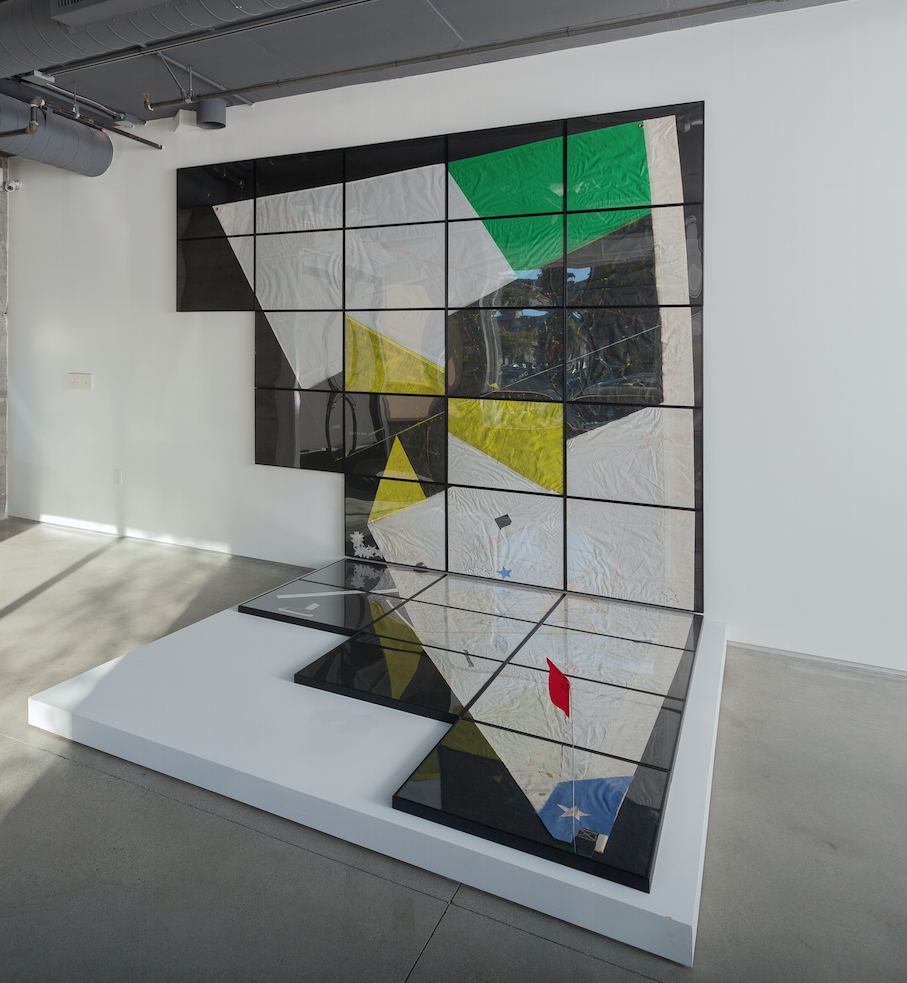
© » KADIST
Enrique Ramirez
Ramirez’s The International Sail is the fifth in a series that features an upside-down worn out, mended and fragmented boat sail. These works epitomize the idea of perpetual movement and migration while carrying a deep personal meaning in the creative process, as the artist’s father himself, still living in Chile, mends and sends the sails to his son, living in Europe. The reversed position of the sail recalls both the shape of South America itself and the Eurocentric view that in the Southern Hemisphere, everything is “upside-down.” The stitches themselves create an illusion of an alternative political geography, and the framed-cuts impose a cartographic grid.

© » KADIST
Paz Errázuriz
La manzana de Adán (La Palmera, Santiago) by Paz Errázuriz is part of the celebrated series La manzana de Adán (Adam’s apple) that spans 5 years (1982-1987) of documenting the lives of transgender sex workers in La Jaula and La Palmera brothels in the Chilean cities of Talca and Santiago. The series, whose subjects were extremely subversive, as well as critically vulnerable to the repressive political regime, were finally shown in Chile shortly before the end of the dictatorship in 1990, and later compiled in a book of the same title with texts by Peruvian writer Claudia Donoso. This work portrays a scene at La Palmera brothel in Santiago.

© » KADIST
Enrique Ramirez
Enrique Ramirez’s La Memoria Verde is a work of poetry, politics, and memory created in response to the curatorial statement for the 13th Havana Biennial in 2019, The Construction of the Possible . Other well known works by Ramirez feature the movement and endless symbolism of the sea—like the simultaneous engagement and retreat of the tide—but La Memoria Verde takes the land, plant life, and its human inhabitants as its subject. The film begins with a soft, green, algae-like image that waxes and wanes in focus, then gives way to swaying treetops blowing in a soft wind.

© » KADIST
Enrique Ramirez
In Un Hombre que Camina (A Man Walking) (2011-2014), the sense of rhythm and timing is overpowered by the colossal sense of timelessness of this peculiar place. Shot in Uyuni, Bolivia, the film depcits world’s largest salt flat, a site that sits in a mountainous region at over twelve thousand feet above sea level. Ramirez’s work is deeply invested in the loss of regional identity, and the anachronistic dress of his “modern-day shaman” in the film is meant to reconcile the historical and cultural gaps between tribal traditions of a specific time and place and the all-too-prevalent homogeneity brought on by advanced capitalism.
Enrique Ramirez
- year born: 1979
- gender: male
- nationality: Chilean
- home town: Santiago, Chile
-
1980-1989
Paz Errázuriz
1986La manzana de Adán (La Palmera, Santiago) by Paz Errázuriz is part of the celebrated series La manzana de Adán (Adam’s apple) that spans 5 years (1982-1987) of documenting the lives of transgender sex workers in La Jaula and La Palmera brothels in the Chilean cities of Talca and Santiago...
-
2010-2019
Enrique Ramirez
2017Ramirez’s The International Sail is the fifth in a series that features an upside-down worn out, mended and fragmented boat sail...
Enrique Ramirez
2019Enrique Ramirez’s La Memoria Verde is a work of poetry, politics, and memory created in response to the curatorial statement for the 13th Havana Biennial in 2019, The Construction of the Possible ...